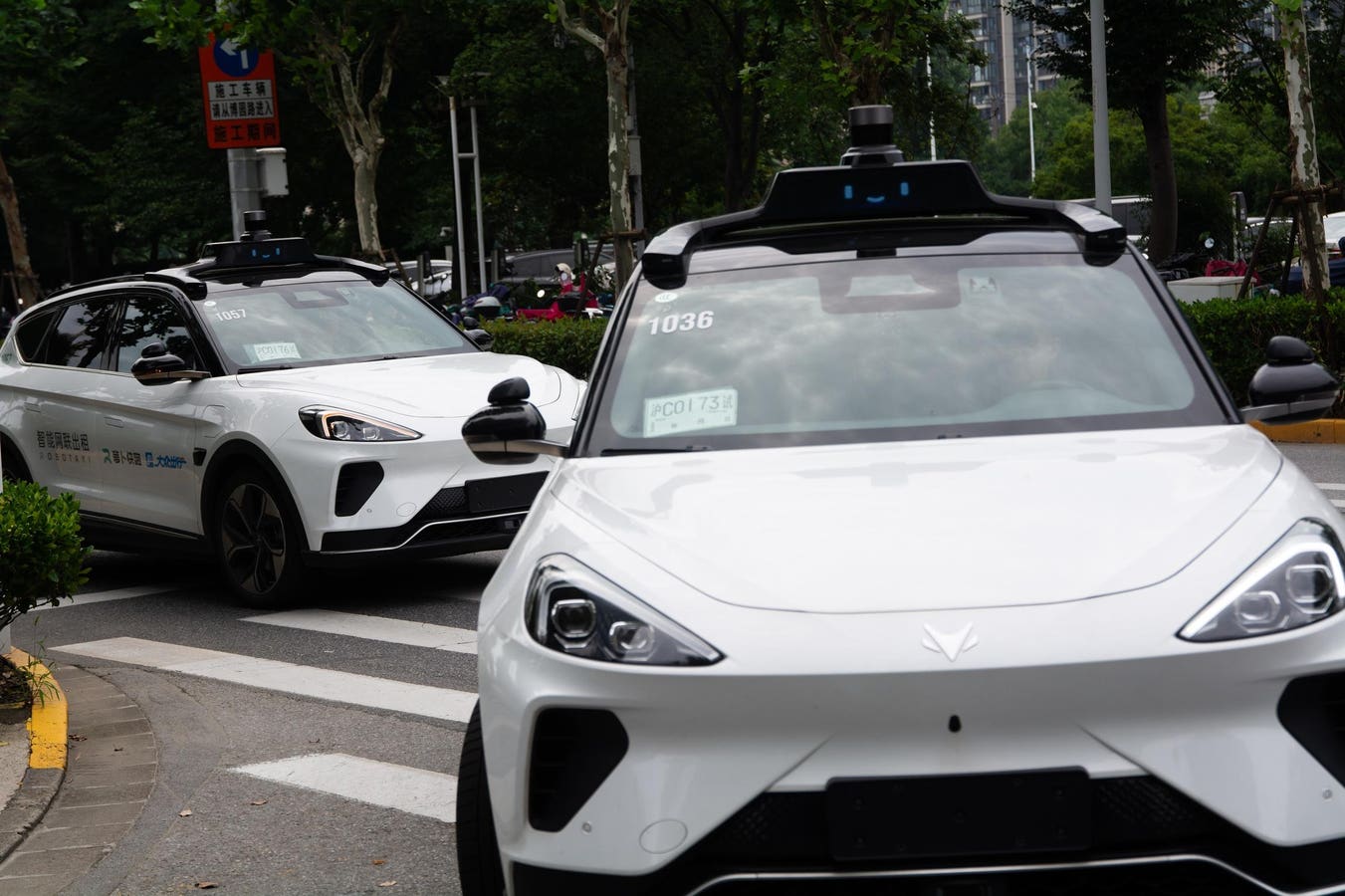The Baidu Robotaxi, launching test runs in the Jiading area of Shanghai, China, on July 15, 2024. … More
The tech for robotaxis might be there one day (though, perhaps not yet for Tesla and its safety drivers). Regulators are busy at work. But can autonomous vehicles’ business models really afford scale?
Leaders from driverless companies at the MOVE 2025 conference in London this week repeatedly mentioned the issue of scaling — be it bringing down costs of autonomous tech, managing maintenance of robotaxis, and remote monitoring ratios.
Pierre Pomper, chief commercial officer of autonomous trucking company Einride, said at the conference that “the stars are aligning” for autonomous vehicles, particularly with regulatory activity and technological maturity. “We’re in the right place to scale.”
But even if that’s true — and that remains to be seen — scaling these business models comes with plenty of challenges.
True costs of robotaxi services versus people
Industry leaders speaking at the conference laid out a series of hidden costs that need to be considered if and when the technology works and regulators allow such services.
Helen Pan, general manager for Apollo Autonomous at Chinese tech giant Baidu, noted that the costs of vehicles and the hardware bolted onto them remains a major concern, noting they need to be significantly cheaper than a human driver or there’s little chance for business success. “We have to go really low cost, extremely low cost,” Pan told attendees. “You have to be cheaper than a human driver, what the driver can deliver.”
And while the cost of the car, sensor systems, and on-board computers are coming down, she said, they are just part of the total bill when it comes to robotaxi services, with many people working behind the scenes to enable such services despite removing a driver from behind the wheel.
After all, an Uber or Lyft driver not only owns their vehicle (in most markets, at least) but also cleans and maintains it, with all the time and costs that includes. For a robotaxi service, the driver is gone — so someone else needs to be hired to clean out cars.
Rosa Mendoza, who drives for Uber and Lyft, cleans her car with disinfectant before the car caravan … More
Lukas Neckermann, co-founder of PAVE Europe, pointed out that early deployments of robotaxis in China and the US had as many people “behind the scenes” as they would have had drivers.
“All of that effort that goes into what an Uber or Lyft driver does — cleaning the vehicle, maintaining the vehicle, charging the vehicle, registering the vehicle, the fleet management, et cetera — it doesn’t go away, it just goes somewhere else,” Neckermann noted. “Some of that back office operation is a real opportunity, on the one hand, but it’s also a real cost.”
Remote robotaxi operations
One “back office” cost to driverless is remote operation — and the ratio between cars and human monitors back at headquarters isn’t information that companies are keen to share, with Tesla saying ahead of its robotaxi launch that it would have “plenty of tele-ops”.
At MOVE 2025, Kathy Winters, COO at May Mobility, stressed that “teleassist” wasn’t about remotely driving the vehicles. “They simply monitor and, if a vehicle gets into trouble, make suggestions or give it permission to maybe go around something that popped up strangely,” she said. “It’s very rare.”
A May Mobility autonomous vehicle shuttle in Ann Arbor, Michigan, US, in 2023. Photographer: … More
She said May started with a one-to-one ratio of car to human monitor in the beginning, and has since improved that to one person overseeing four vehicles. “By the end of this year, very soon, we’ll be one monitor person to ten vehicles,” she predicted. “So when you start to see those kinds of numbers go up, it gets very cost efficient and very effective.”
But that suggests that companies that haven’t managed to improve that ratio could struggle to scale.
Scaling training data for robotaxi rollouts
Winters also pointed to the ongoing challenge of expanding into new cities — an idea known as generalisable autonomy, allowing a car that works in, say, San Francisco, to be dropped into Miami, London or Tokyo with as little additional training as possible.
It’s something Waymo is testing this year with trials in a wider range of geographical locations, to see if the existing system can work in other locales.
“Most companies, they invest a lot,” May’s Winters said of such efforts. She said that first an autonomous company raises billions of dollars, then it drives millions and millions of miles for training, hard-codes in edge cases, and develops an offline driving model — only to have to do it again when they move to another city. That’s a major hurdle for scaling.
“Many of the autonomous vehicle companies that have taken this approach, they haven’t succeeded,” she added, pointing to Cruise among others. “The model wasn’t sustainable.”
Because of that, Winters suggested that any systems trained in places with only nice weather would find difficulty elsewhere — May Mobility, she was keen to point out, has operations in Ann Arbour, Michigan, which has the full “four seasons, most of them bad”. And, she said that highlighted the importance of building reasoning into systems, so they could better “understand” what they see, even if they’ve never seen it before.
Others noted the challenge of shifting to driving on the right-hand side of the road, with May and Waymo both currently testing in Japan, and Baidu doing the same in Hong Kong, in order to train systems.
Different business models for robotaxis
Gavin Jackson, CEO at Oxa said, suggested that the high costs and lack of actual need could compound to slow the robotaxi rollout — with autonomy instead coming to trucks first.
“What problems are we trying to solve,” Jackson said, later adding: “we think that the problem that needs solving the soonest is adding more capacity to logistics.”
The Einride T-pod autonomous concept truck is pictured during the press preview at the 2018 North … More
Winters pointed to public transport potential, but noted that robotaxi services were a solid way to get more autonomous cars out there, referencing May’s recent shift into that arena with Uber. “This move to take on ride hail is just a different way to scale,” she noted. “You know, we see the need for accessible transportation for folks everywhere, whether it’s public transit or not, and we want to reduce the amount of dependency on car ownership.”
And she noted the costs of personal car ownership shouldn’t be ignored. “It’s really expensive.”
So even if the tech gets sorted, the road to driverless taxis and robotaxi services remains full of costs.









